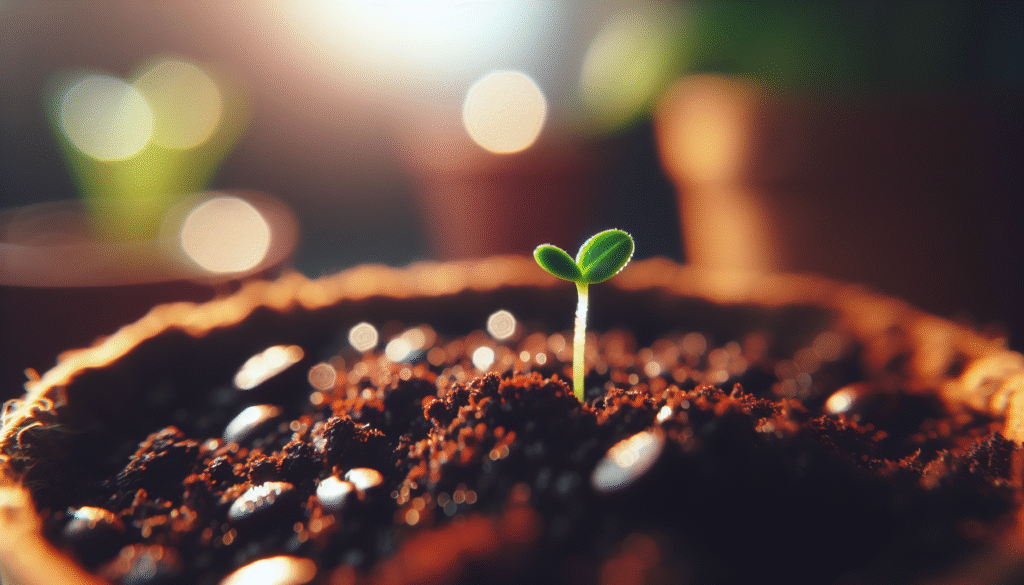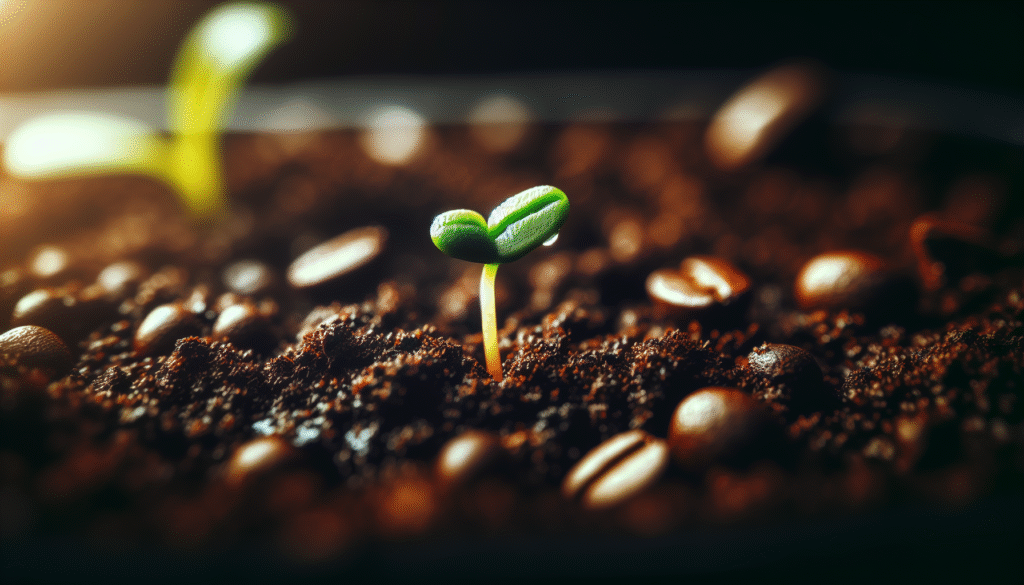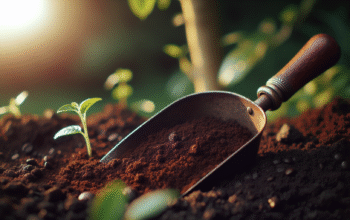?Have you ever thought about growing coffee bean seeds at home and turning a corner of your living space into a small, fragrant coffee garden?

Growing Coffee Bean Seeds at Home
Growing coffee bean seeds at home can be a rewarding and surprisingly achievable project for gardeners and coffee lovers. You’ll learn how coffee plants develop from seeds into shrubs that can produce cherries, and you’ll gain an appreciation for the labor behind every cup you brew.
Why grow coffee at home?
Growing your own coffee gives you firsthand knowledge of the plant’s life cycle and an opportunity to care for a living coffee source. You’ll enjoy the challenge of germinating delicate seeds, providing the right microclimate, and possibly harvesting cherries you processed yourself.
What you can expect from homegrown coffee
Homegrown coffee plants are usually ornamental for the first few years, offering glossy leaves and fragrant white flowers. If conditions are ideal, you may also see cherries develop in two to four years, which you can process and roast on a small scale.
Understanding coffee plants and seeds
A little botanical background helps you make better decisions about planting and care. Coffee plants belong mainly to two species you’ll encounter: Coffea arabica and Coffea canephora (commonly called robusta).
Coffee species and characteristics
Coffea arabica typically produces sweeter, more delicate beans and prefers cooler, more stable temperatures. Coffea canephora is hardier, tolerates warmer climates and lower elevations, and yields more caffeine. You’ll want to choose a species that matches your home environment and goals.
What are coffee bean seeds?
What people call “coffee beans” are actually seeds inside the coffee cherry. Each cherry normally contains two seeds (beans) wrapped in a thin parchment and mucilage. Those seeds are what you plant to raise new coffee plants.
Seed viability and freshness
Coffee seeds are recalcitrant, which means they don’t tolerate drying or long storage; they lose viability quickly. For best results, plant seeds soon after you extract them from ripe cherries, ideally within a few weeks. If you must store them, keep them cool and slightly moist for a short time.
Sourcing coffee bean seeds
Where you get your seeds makes a big difference in germination success. You can source seeds from fresh cherries, specialty seed suppliers, botanical gardens, or import small quantities from reputable growers.
Fresh cherries versus cleaned seeds
Fresh cherries contain the seeds covered in mucilage and parchment. Some growers plant seeds still in the fruit, but most recommend removing pulp and mucilage to reduce disease risk and make handling easier. If you buy pre-cleaned seeds, confirm they were kept moist and stored properly.
Buying seeds from reputable sources
If you don’t have access to fresh cherries, purchase seeds or young seedlings from a trusted nursery or online supplier. Look for seeds labeled by variety and species, and ask about the harvest date and storage conditions to ensure reasonable viability.
Preparing seeds for planting
Prep matters. How you clean and handle coffee bean seeds affects germination rate and the seedling’s early health.
Removing pulp and mucilage
If you start from fresh cherries, gently depulp them by squeezing or rubbing between your hands, then rinse off mucilage with water. Some home gardeners ferment briefly to loosen mucilage, but keep fermentation short and monitor carefully to avoid fungal growth.
Scarification and soaking
You don’t normally need to scarify coffee seeds. However, soaking cleaned seeds in lukewarm water for 12–24 hours can help rehydrate them and may promote germination. Change the soak water if it becomes cloudy.
Germination: step-by-step
Germination is the critical first stage. Your goal is to provide warm, moist, and stable conditions that mimic the shaded forest floor where coffee naturally sprouts.
Ideal germination conditions
Coffee seeds germinate best at temperatures around 20–25°C (68–77°F) with high humidity and indirect light. Keep soil consistently moist but not waterlogged and maintain good air circulation to reduce fungal risk.
Steps to germinate:
- Prepare a well-draining seed mix (see potting mix section).
- Sow cleaned seeds about 1–2 cm (½–¾ inch) deep, with the flat side down if identifiable.
- Cover lightly and mist the surface; avoid compacting the soil.
- Use a humidity dome, plastic bag, or tray cover to retain moisture.
- Place in bright, indirect light; avoid direct midday sun.
- Monitor moisture daily and remove cover briefly each day to prevent mold.
- Expect germination in 2–8 weeks, though it can sometimes take longer.
Common germination problems and fixes
If seeds rot, you likely had excessive moisture or poor drainage; reduce humidity and improve air exchange. If germination is very slow, check temperature — you may need consistent warmth. Low light won’t prevent sprouting, but seedlings will be weak; provide bright, filtered light once cotyledons appear.
Potting mix and containers
Choosing the right medium and container supports healthy roots and prevents disease. Coffee prefers a mix that holds moisture without becoming waterlogged.
Recommended potting mix
A typical home blend:
- 40% peat moss or coco coir for moisture retention
- 30% compost or well-rotted leaf mold for nutrients
- 20% perlite or coarse sand for drainage
- 10% aged pine bark for structure
Aim for a loose, airy mix with a slightly acidic pH around 6 to 6.5.
Container choices and drainage
Start seeds in shallow trays, small pots, or seedling cells. Use containers with drainage holes and a saucer to catch excess water. As plants grow, move them into progressively larger pots to avoid becoming root-bound.
Light, temperature, and humidity
Replicating the plant’s native understory conditions gives you the best chance for strong growth.
Light requirements
Coffee plants need bright, indirect light. Indoors, place them near an east- or north-facing window or use grow lights to provide 8–12 hours of gentle illumination. Avoid direct afternoon sun that can scorch young leaves.
Temperature needs
Maintain daytime temperatures between 18–24°C (64–75°F) and avoid sudden dips below 15°C (59°F) for arabica. Robusta tolerates warmer temps but still appreciates stable conditions.
Humidity preferences
Coffee thrives in higher humidity (50–70% or higher if possible). You can increase humidity with pebble trays, regular misting, grouping plants, or using a humidifier. Be careful not to create stagnant air that encourages mold.
Watering and feeding
Water and nutrients are central to vigorous growth. Your approach should keep soil moist but not soggy while offering balanced nutrition.
Watering schedule
Water when the top 1–2 cm of soil begins to dry, keeping the root zone consistently moist. Reduce watering slightly in cooler months. Use filtered or rainwater if your tap water is very alkaline or high in salts.
Fertilizing young plants
Begin with a gentle feeding regimen after true leaves develop. Use a balanced, water-soluble fertilizer (for example, 10-10-10) at half strength every 4–6 weeks, or apply organic options like compost tea or diluted fish emulsion. Increase feeding as the plant grows, focusing on nitrogen during vegetative growth and switching to a more balanced formula as it nears flowering.

Repotting and pruning
You’ll need to repot periodically and prune to manage size and encourage a productive structure.
When to repot
Repot when roots begin to appear at the pot’s drainage holes or the plant becomes root-bound. Typically repot every 12–18 months into a pot that’s 2–5 cm (1–2 inches) larger in diameter.
Pruning for shape and productivity
Prune lightly to shape and remove weak, crossing, or dead branches. Pinch back growing tips to encourage a bushier form and more lateral branches, which can support more flowers and cherries in time.
Flowering, pollination, and fruiting
Seeing flowers and fruit is the most exciting milestone. Flowers are fragrant and small, followed by cherries that develop over several months.
Flowering cues
Coffee plants flower best when given stable conditions, slight drying before rainfall (or simulated through controlled watering), and consistent light. Indoor plants flower less predictably but often after they’ve matured (2–4 years).
Pollination and fruit set
Many coffee varieties are self-fertile, but cross-pollination by insects can increase fruit set. If you grow indoors, hand pollination with a small brush can help set more cherries.
Time from flower to ripe cherry
Once flowers are pollinated, cherries typically take 6–9 months to reach full red or yellow ripeness, depending on the variety and conditions.
Harvesting and basic processing
Even a few cherries can be fun to harvest and process. Processing methods influence seed viability if you plan to replant, and they determine how beans taste if you roast them.
Harvesting cherries
Pick cherries when they are fully ripe and colored (red, yellow, or whatever the variety’s ripe color is). Ripe cherries are sweeter and easier to pulp.
Simple backyard processing
To extract seeds for planting:
- Depulp cherries and rinse away mucilage.
- Pat seeds dry on a clean towel and use them promptly.
If you plan to roast for coffee, traditional processing includes pulping, fermenting to remove remaining mucilage, washing, and drying to about 10–12% moisture before storage. For tiny batches, sun-drying on a clean tray or using a low-temperature oven method can work.
Pest and disease management
Keeping pests and diseases in check is easier with good cultural practices and early detection.
Common pests
Expect occasional issues with scale, aphids, mealybugs, spider mites, and whiteflies. Treat infestations with insecticidal soap, neem oil, or horticultural oils; isolate affected plants to stop spread.
Common diseases
Root rot (from overwatering) and fungal leaf spots are common. Ensure good drainage, avoid overhead watering, and provide adequate air circulation. If you see leaf rust (orange powdery spots), reduce humidity peaks and remove infected material.
Preventive care
Quarantine new plants, sterilize tools, avoid overwatering, and provide balanced nutrition. Healthy plants resist pests and disease more effectively.
Propagation alternatives: cuttings and grafting
If seeds aren’t your preference, you can propagate by stem cuttings or purchase grafted plants.
Propagating from cuttings
Take semi-hardwood cuttings 10–15 cm long, remove lower leaves, dip in rooting hormone, and place in a moist, well-draining mix under high humidity and bottom heat. Cuttings may root in several weeks.
Grafting for faster fruiting
Grafted plants onto hardy rootstocks can produce faster and combine desirable attributes (disease resistance with flavor quality). Grafting is more advanced but worthwhile if you want earlier yields or specific characteristics.
Indoor versus outdoor growing
Decide whether coffee will be an indoor potted plant or an outdoor shrub in a suitable climate.
Growing indoors
Growing coffee indoors gives you control over temperature and humidity. You’ll need to provide bright, indirect light, consistent watering, and high humidity to approximate its native habitat.
Outdoor cultivation
If you live in USDA zones roughly 10–12 (or equivalent warm, frost-free climates), you can grow coffee outdoors under partial shade. Plant it in well-draining, slightly acidic soil and protect from harsh sun and wind.
Troubleshooting common problems
A few common signals indicate what your plant needs. Learn to read leaves, stems, and soil for quick fixes.
Table: Common problems and quick fixes
| Symptom | Likely cause | What you should do |
|---|---|---|
| Yellowing lower leaves | Overwatering or nitrogen deficiency | Check drainage, reduce watering, apply balanced fertilizer |
| Brown leaf tips | Low humidity or salt buildup | Increase humidity, flush soil with clean water |
| Dropping leaves | Temperature stress or sudden change | Stabilize temperature and light; avoid drafts |
| Stunted growth | Low light or nutrient deficiency | Increase light, feed regularly |
| White fuzzy mold on soil | Excess moisture, poor airflow | Improve drainage, reduce humidity, remove affected soil |
When to ask for help
If problems persist despite adjustments, take photos and consult a local nursery or online specialist. Local growers can advise about pests or climate-specific issues.
Long-term care and expectations
Growing coffee is a multi-year commitment with gradual rewards. Knowing long-term needs helps you plan for space, pruning, and pot replacement.
Lifespan and productivity
Coffee plants can live for many years with proper care. They may become more productive as they mature, and with regular pruning and fertilization you can maintain them as compact, productive shrubs.
Seasonal care
Adjust watering and feeding with seasonal changes. Reduce fertilizer in cool, lower-light months and increase it during active growth in spring and summer. Protect outdoor plants from frost and extreme heat.
Saving seeds and continuing the cycle
If you want to produce more plants, seed saving is an option, but it requires timely action.
Best practices for saving seeds
Collect seeds from fully ripe cherries and process them quickly. Use seeds within a few weeks for best germination. If you must store them briefly, keep them cool, dark, and slightly moist in a breathable container.
Genetic variability and true-to-type plants
Growing coffee from seed can yield genetic variation, especially if cherries were cross-pollinated. If you want clones of a preferred plant, propagate by cuttings or obtain rooted cuttings or grafted material.
Final tips for success
A few practical habits will improve your success and enjoyment.
- Start with several seeds to increase the chance of viable seedlings.
- Keep a notebook to record planting dates, germination times, and fertilizer schedules.
- Be patient — coffee is slow-growing but rewarding.
- Join a community of coffee growers online or locally to exchange tips and seeds.
Summary encouragement
Growing coffee bean seeds at home gives you a direct connection to the crop behind your favorite beverage. With attention to freshness of seeds, correct soil and moisture conditions, and consistent care, you’ll be able to raise healthy coffee plants that bring both beauty and the potential to produce cherries.
Table: Quick-reference care guide
| Aspect | Ideal condition |
|---|---|
| Temperature | 18–24°C (64–75°F) for arabica |
| Light | Bright, indirect light; 8–12 hours/day |
| Humidity | 50–70% or higher |
| Soil pH | 5.5–6.5 (slightly acidic) |
| Watering | Keep evenly moist; avoid waterlogging |
| Fertilizer | Balanced NPK; organic options monthly |
| Germination time | 2–8 weeks typical |
| First flowering | 2–4 years under good care |
| Fruit ripening | 6–9 months after flowering |
You’re now equipped with the knowledge to start germinating, growing, and caring for coffee bean seeds at home. If you have specific questions about your climate, seed source, or a problem you’re seeing, share the details and you’ll get tailored advice for your situation.



